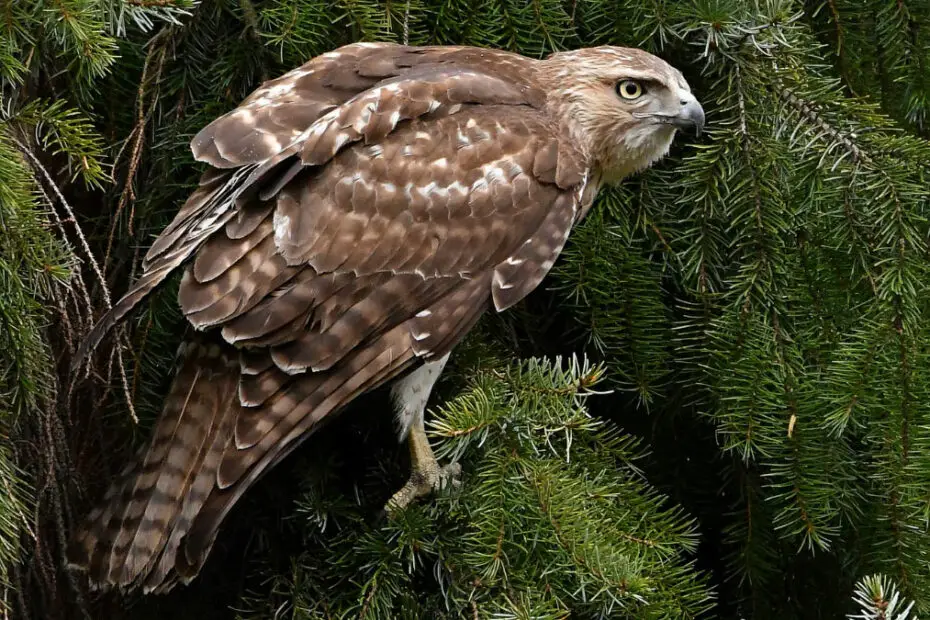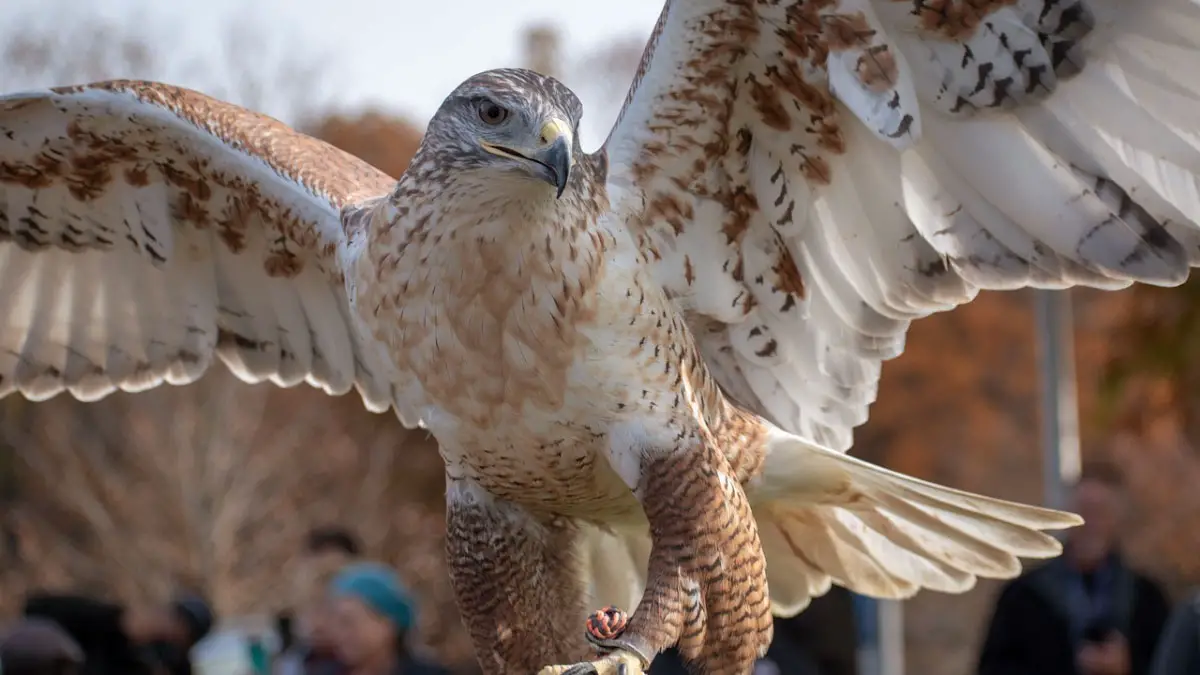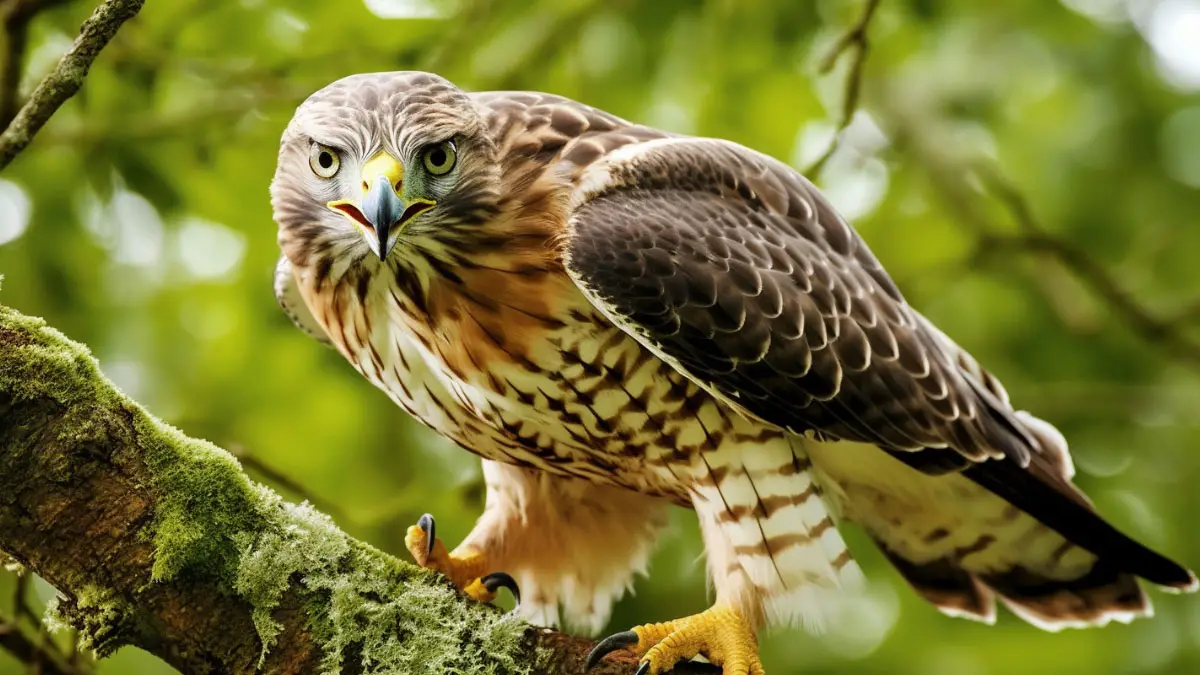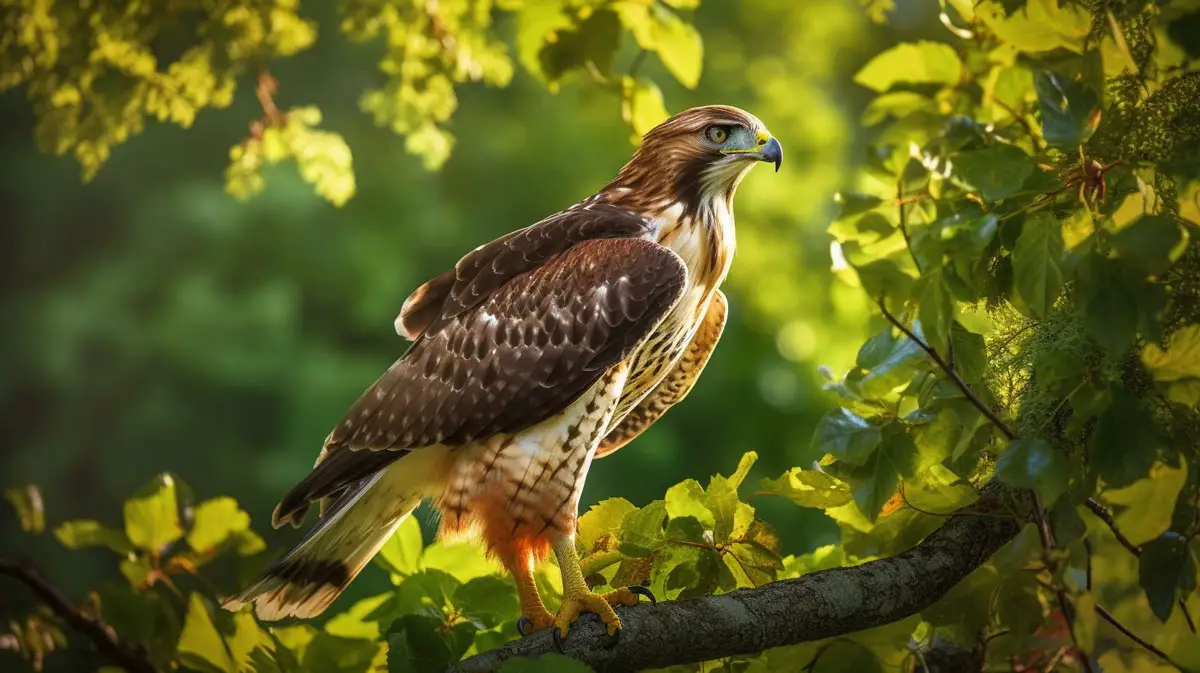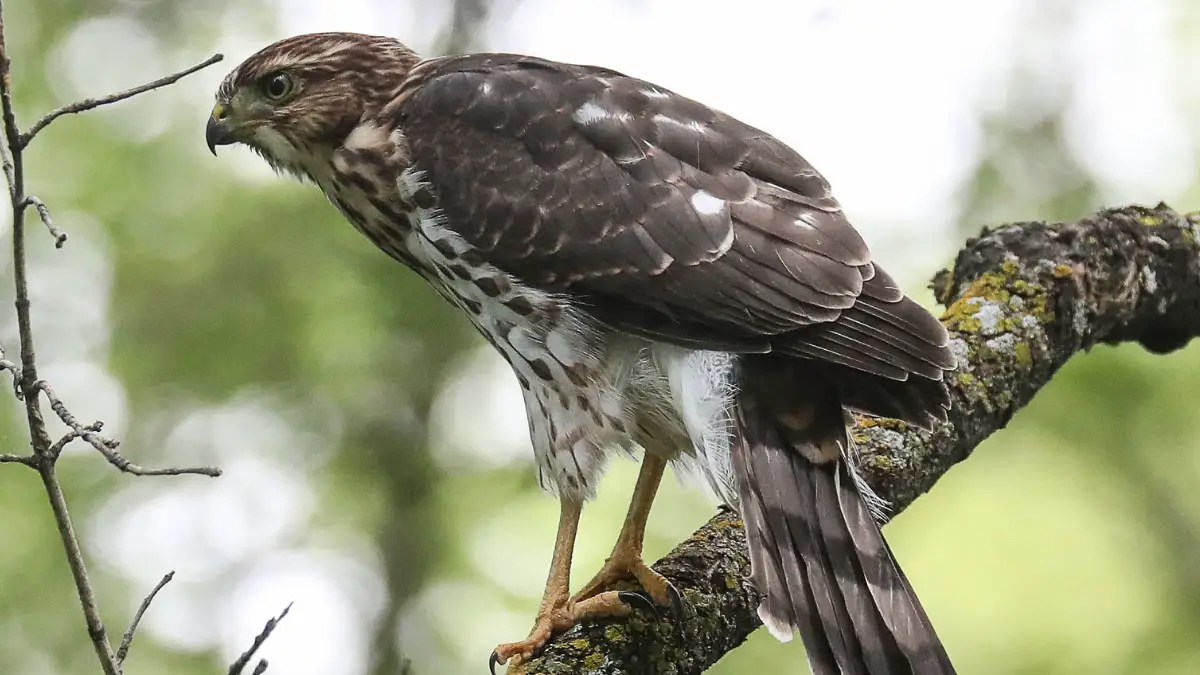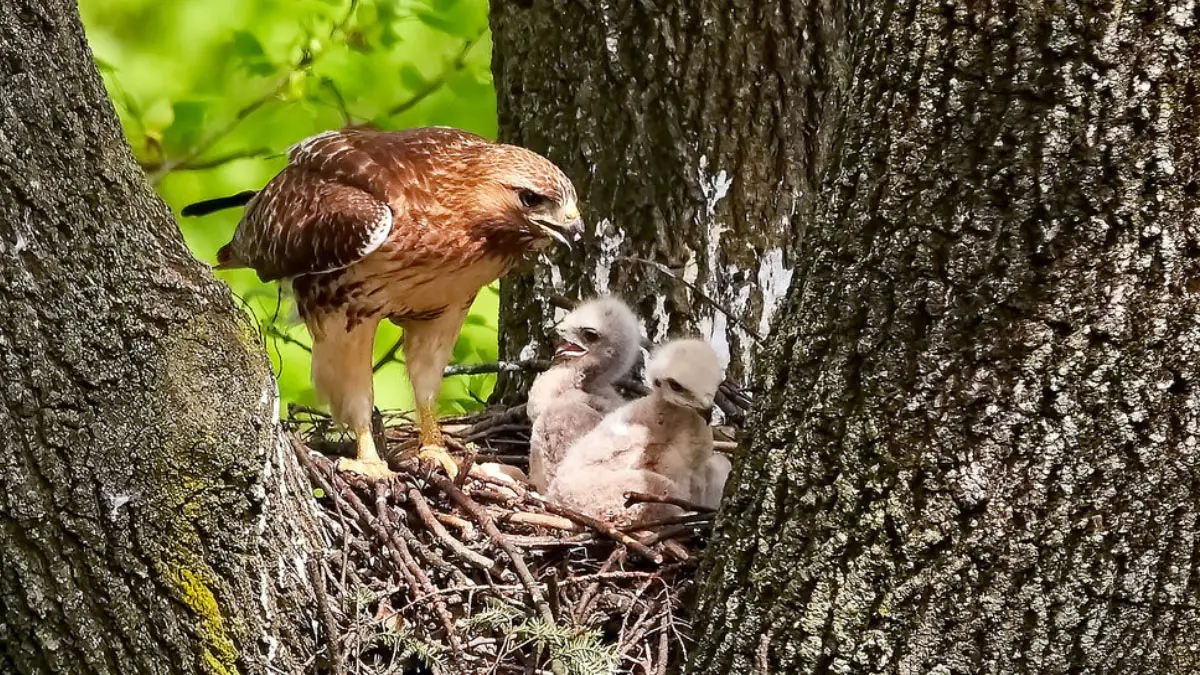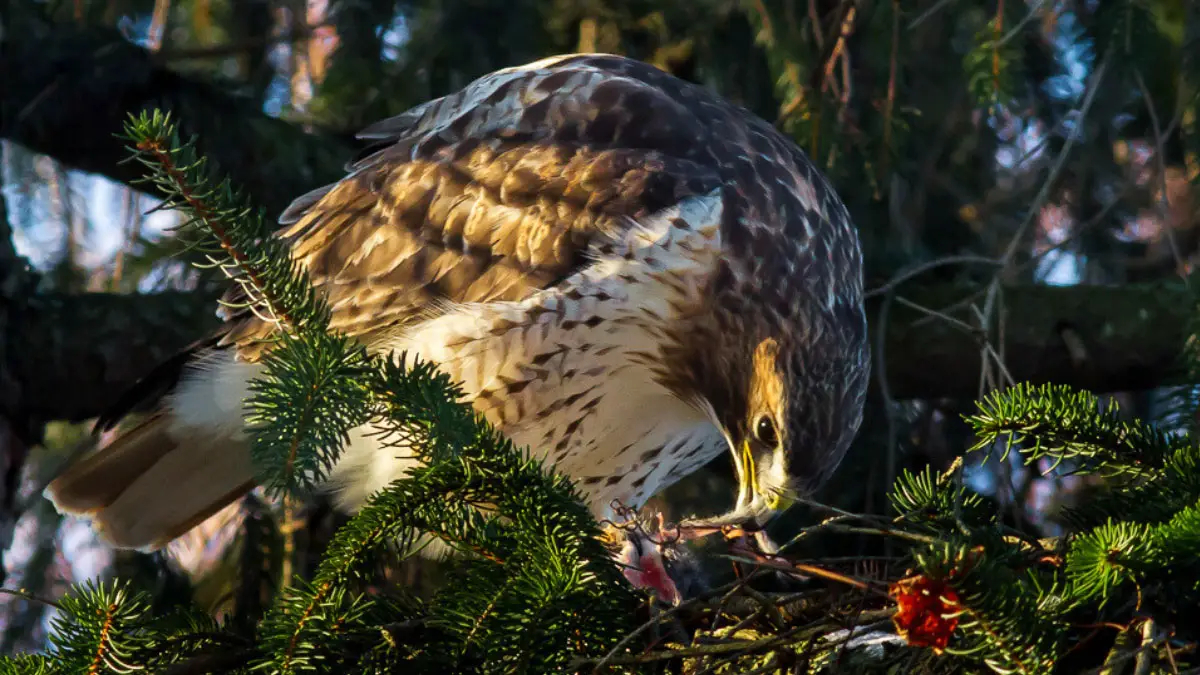Did you know that Hawks and Eagles are from the same family? Yes, they have a lot in common, especially in terms of physical features.
Hawks have got incredibly sharp and hooked beaks, perfect for tearing up their meals. And their legs are strong for gripping onto prey, with powerful talons. Moreover, their wingspan can be upto 55 inches.
Their respiratory system has air sacs that allow for a constant flow of oxygen as they fly. Hawks have a two-part stomach for breaking down and grinding up tough food such as bones. They also have a unique structure called the cloaca. This serves as the endpoint for the digestive, urinary, and reproductive systems.
Now, there’s a lot more to know about them. So, in this article, we will explore in-depth the raptor anatomy of hawks.
We will also learn about some of the bird adaptations that hawks have developed over time to cope with various environmental challenges.
Remember, understanding hawk anatomy is not only interesting but also useful for wildlife conservation efforts. So, let’s get going.
External Anatomy Of Hawks: Overview Of Hawk External Physical Characteristics
Hawk belongs to the bird of prey family Accipitridae. They have a lot in common with most other bird of prey morphology. However, they also have many unique external features that help them hunt, fly, and survive in different habitats.
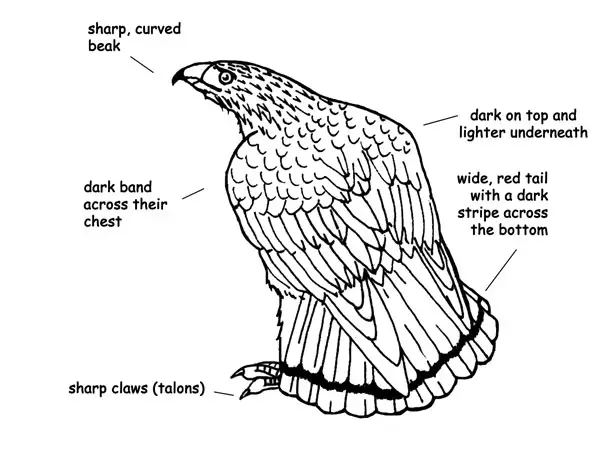
Let’s go over some of the most important external features of hawks’ avian physiology:
1. Head:
Hawk’s beak and talons are “hooked.” They use these to tear their prey into pieces. They also have excellent eyesight that allows them to spot their prey from far away. Their eyes are protected by an eye ring of feathers and an eyelid that closes horizontally.
Hawks have narial feathers that cover part of their nostrils, which can vary in shape depending on the hawk species. For example, accipiter hawks have oval nostrils, while falcons have circular nostrils.
Some hawks have distinctive markings on their head. Such as a supercilium (a line of feathers above the eye), an eyeliner (a line of feathers behind the eye), or ear coverts (feathers covering the ear openings).
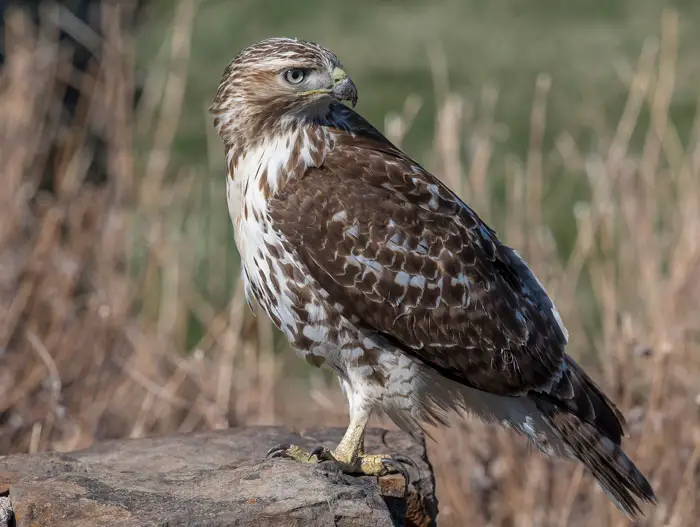
2. Wings:
Hawks have strong wings that enable them to fly fast and agile. Their wings are made up of different types of feathers. Such as primary feathers (the longest and outermost feathers), secondary feathers (the shorter and innermost feathers), and coverts (the small feathers that cover the bases of the primary and secondary feathers).
Hawks also have an “alula.” It is a small group of feathers on the front edge of the wing that helps them control their flight mechanics, speed, and direction. The shape and structure of the wings vary depending on the hunting behavior and habitat of the hawk.
According to the University of Illinois Urbana-Champaign, accipiter hawks have short, broad wings that allow them to maneuver through dense forests. But, buteo hawks have long, narrow wings that help them soar over open areas.
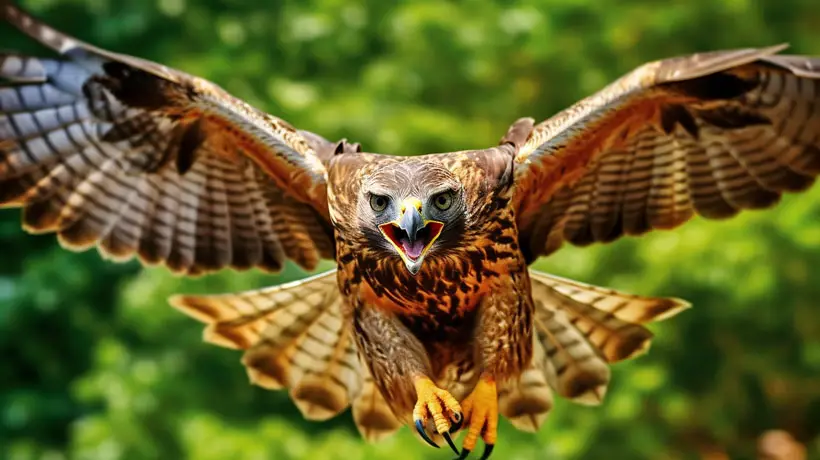
3. Legs and Feet:
Hawks have powerful legs and feet that they use to catch and hold their prey. They have sharp talons (claws) on each toe that can pierce through skin and bones.
They also have a special toe arrangement called “zygodactyly.” This means they have two toes facing forward and two toes facing backward. This gives them more grip and stability when perching or grasping their prey.
The size and strength of the feet vary depending on the type and size of the prey and prey detection strategy. For example, Accipiter hawks have smaller feet that are adapted for catching birds. Conversely, Buteo hawks have larger feet that can handle mammals or reptiles.
Some hawks have “crural” feathers that cover part or all of their legs. This provides insulation or camouflage.
4. Tail:
Hawks have a long tail that they use to balance and steer their flight. The tail is made up of rectrices (tail feathers). These can be spread or closed depending on the speed and direction of the flight. The shape and length of the tail vary depending on the species and habitat of the hawk.

For example, accipiter hawks have long, narrow tails that help them turn quickly in tight spaces. But buteo hawks have short, wide tails that help them glide smoothly in open areas.
Lastly, some hawks have distinctive patterns or colors on their tails, such as bands or spots, that can be used for identification or communication.
5. Plumage:
Hawks have a layer of plumage (feathers) that covers their body and provides insulation, protection, and camouflage.
Some hawks have bright or contrasting colors that help them attract mates or signal their status. Contrarily, others have dull or cryptic colors that help them blend in with their environment or avoid predators.
Internal Anatomy of Hawks: Overview Of Hawk Internal Physical Characteristics
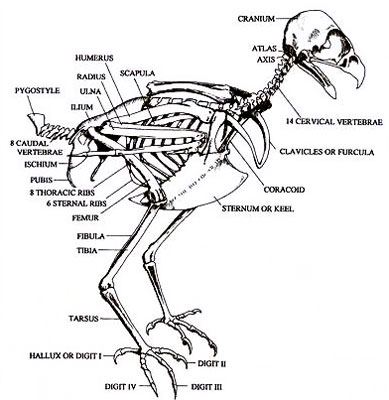
The physical characteristics of hawks are interesting and unique. They consist of the following:
1. Skeletal Structure:
Hawks have light but strong skeletons that are mostly made of hollow bones with crisscrossing struts for support.
Some of their bones are fused together, such as the pygostyle. It is a single bone formed by the fusion of several tail vertebrae. This helps them reduce weight and increase stability during flight.
Hawks also have some special bones that are unique to birds, such as the furcula. It is a wishbone-shaped bone that connects the shoulder blades and acts as a spring to store and releases energy during wing beats.
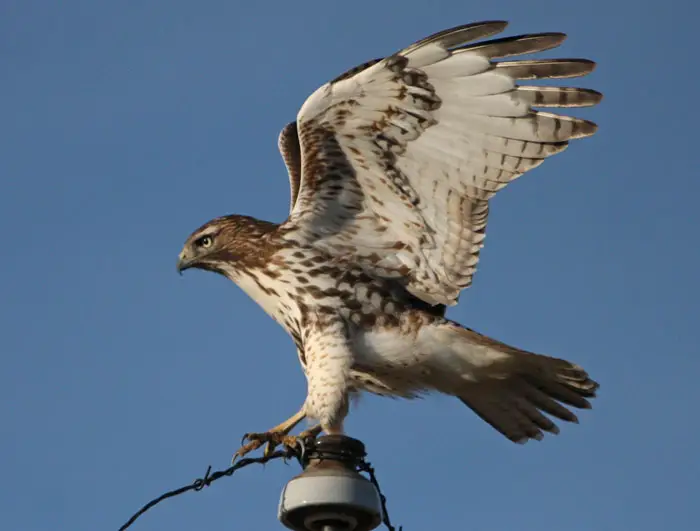
Another special bone is the keel. It is a large projection on the sternum that provides attachment for the powerful wing muscles.
Hawks also have some adaptations in their skull, spine, wings, and legs that help them hunt and capture prey. For example, their skull is light and has large eye sockets that allow them to have excellent vision. Their spine is flexible and allows them to twist their head up to 270 degrees.
2. Muscular System:
Hawks’ most important muscles are the wing muscles. These are divided into two groups: the pectoral muscles and the supracoracoideus muscles. The pectoral muscles are located on the chest and are responsible for pulling the wings down during flight.
The supracoracoideus muscles are located under the pectoral muscles and are responsible for lifting the wings up during flight. These muscles work together to create a powerful flapping motion that propels the hawk forward.
Hawks also have strong leg muscles that help them perch, walk, and grasp prey. Some of these muscles are attached to long tendons that run through a pulley-like system in the ankle joint. It allows them to lock their toes around prey without using much energy.
3. Respiratory System:
Unlike mammals, birds do not have a diaphragm or a pleural cavity to create negative pressure for breathing. Instead, they have a series of air sacs that connect to their lungs and act as bellows to move air in and out of their body.
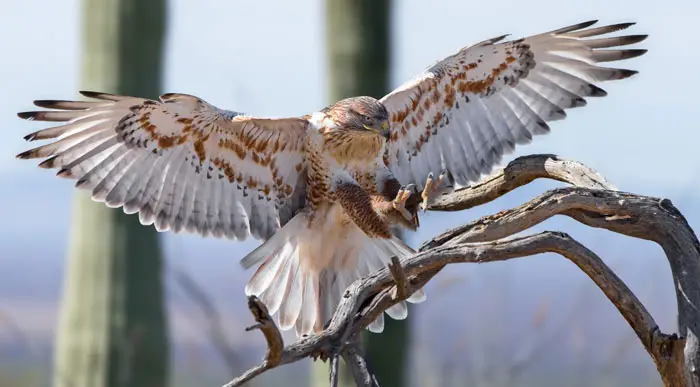
Hawks have 9 air sacs: 2 are cervical, one is clavicular, 2 are cranial thoracic, 2 are caudal thoracic, and 2 are abdominal. These air sacs do not participate in gas exchange directly, but they help distribute fresh air to the lungs and remove stale air from the lungs.
The lungs of hawks are small but highly efficient. They have millions of tiny air capillaries that branch off from the bronchi and surround the blood capillaries in a network called the “parabronchial” system. This allows for a continuous flow of air through the lungs and a high rate of oxygen diffusion into the blood.
4. Digestive System:
Hawks have a specialized digestive system that allows them to digest meat quickly and efficiently.
Their digestive tract consists of several organs: the beak, the tongue, the esophagus, the crop, the proventriculus, the gizzard, the small intestine, the ceca, the large intestine, and the cloaca.
The beak is a hard structure made of keratin that serves as a tool for tearing flesh from prey. The tongue is a muscular organ that helps manipulate food in the mouth and swallow it. The esophagus is a long tube that connects the mouth to the crop.
The crop is an enlarged part of the esophagus that stores food temporarily before it enters the stomach. The stomach of hawks is divided into two parts: the proventriculus and the gizzard.
The proventriculus is the first part of the stomach that secretes digestive enzymes and acids to break down proteins and fats. The proventriculus also kills any bacteria or parasites that may be present in the prey.
The gizzard is the second part of the stomach that has thick muscular walls and contains small stones or grit that help grind up the food. The gizzard also separates the digestible parts of the prey from the indigestible parts, such as bones, feathers, and fur.
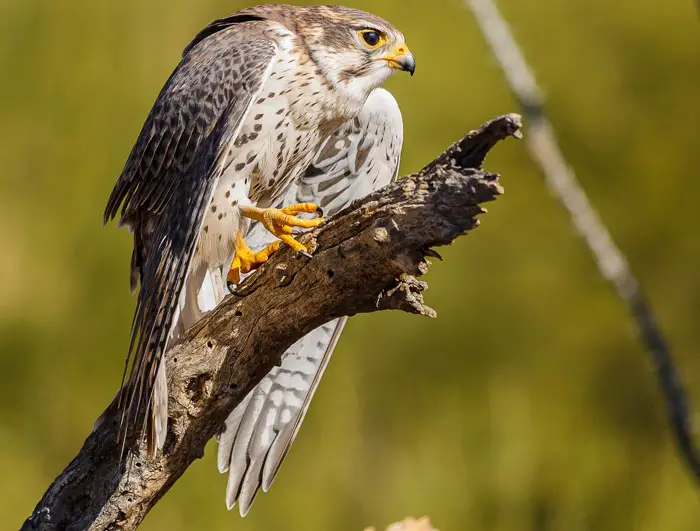
The intestines are where most of the absorption of nutrients takes place. They are divided into two sections: the small intestine and the large intestine. The small intestine is longer and narrower than the large intestine. It has “villi” that increase its surface area for absorption.
The large intestine is shorter and wider than the small intestine and absorbs water and minerals from the food. The large intestine also leads to the cloaca, which is a common opening for excretion and reproduction.
5. Nervous system:
Hawks’ nervous system consists of two main parts: the brain and the sensory organs. The brain is the control center of the nervous system. It receives signals from the sensory organs and sends commands to the muscles.
The brain is divided into three regions: the cerebrum, the cerebellum, and the brainstem. The cerebrum is responsible for higher cognitive functions, such as learning, memory, and decision-making.
The cerebellum takes care of balance, coordination, and fine motor skills. The brainstem is responsible for vital functions, such as breathing, heartbeat, and blood pressure.
The sensory organs of a hawk are specialized structures that detect stimuli from the environment and send signals to the brain. Hawks have five main sensory organs: eyes, ears, nose, tongue, and skin.
- Eyes: Hawk eyesight is eight times sharper than human vision. They have large eyes that occupy most of their skull and face forward to provide binocular vision and depth perception. They also have a third eyelid called a “nictitating membrane” that protects their eyes from dust and injury.
Hawks can see a wide range of colors, including ultraviolet light that helps them locate prey by their urine trails. Hawks can also adjust their focus quickly by changing the shape of their lens or moving their head.
- Ears: Hawks have ear openings on both sides of their head that are covered by feathers to reduce wind noise. They also have asymmetrical ear structures that allow them to pinpoint the direction and distance of a sound source.
- Nose: Hawks have nostrils at the base of their beak that are connected to olfactory receptors in their nasal cavity.
- Tongue: Hawks have taste buds on their tongue that can detect basic tastes such as sweet, sour, bitter, and salty.
- Skin: Hawks have feathers on their skin that provide insulation, waterproofing, camouflage, and flight control.
Adaptations of Hawks: How They Morph Themselves To Survive
Hawks have also adapted well to human constructions, such as telephone poles and fence posts, which they use as perches to scout for prey.
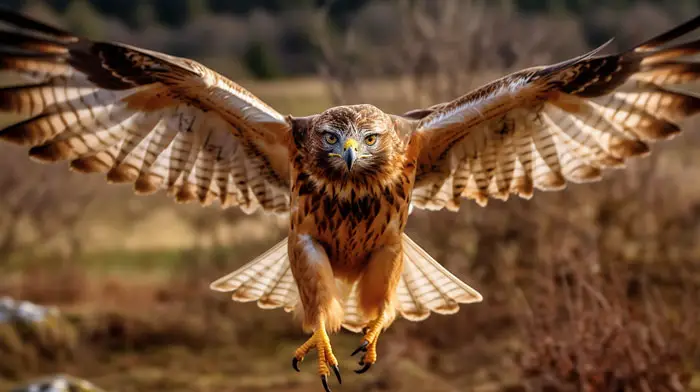
Flight Adaptations:
One of the most important adaptations of birds of prey, such as hawks, is their flight ability. They have a large wing structure, with around 4 feet of wingspan, and strong muscles that allow them to soar, glide, and dive in the air.
Their feathers are also adapted for flight, with stiff primary feathers that provide lift and thrust. And, soft secondary feathers that reduce turbulence and noise.
Hunting Adaptations:
Hawks’ vision is overwhelmingly more powerful than land-based animals. This gives them the ability to hunt prey from a mile away, getting them an edge in predator-prey dynamics.
They learned to hunt in open areas where the prey could not hide from their superior vision.
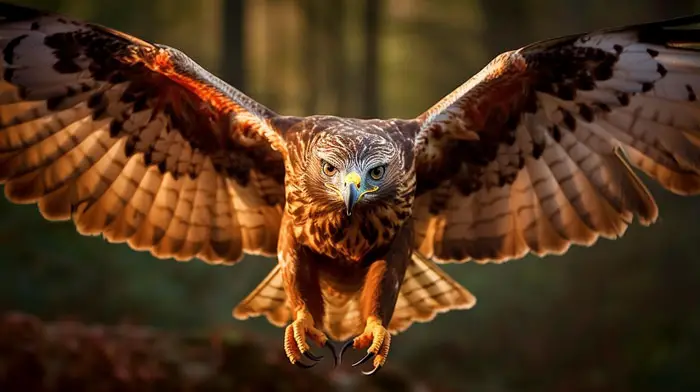
Physiological Adaptations:
Hawks have a strong acid in their stomach that they use for the digestion of meat and dead meat (carrion).
Hawks also have physiological adaptations that help them survive in different environments. Some hawks also undergo “molting” (shedding old feathers and growing new ones) at certain times of the year. They do this to adjust to changing temperatures or conditions.
Their respiratory system allows them to breathe efficiently at high altitudes and speeds. They have a four-chambered heart that pumps blood throughout their body. They have a digestive system that can process large amounts of food quickly.
Besides, they have a high metabolism that helps them maintain their body temperature and energy levels. They also have “thermoregulation” mechanisms that help them cope with heat and cold, such as fluffing or flattening their feathers, panting, or shivering.
Behavioral Adaptations:
Hawks also have many behavioral adaptations that influence their social organization and communication. They are territorial birds that defend their nesting sites and hunting grounds from intruders.
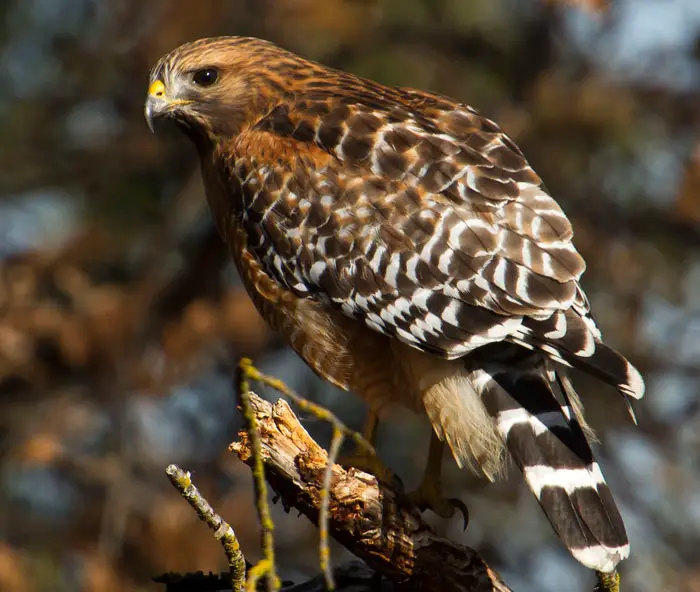
They use vocalizations and body language to communicate with each other and warn off potential threats. They are mostly solitary or monogamous. But, some species may form flocks or cooperative groups during migration or breeding seasons.
Hawks care for their young until they are ready to leave the nest, which may take up to six weeks.
FAQs
Let’s get to know some of the most frequently asked questions related to this topic:
In normal flights, hawks can cruise at around 20 to 50 mph. In diving, hawks can reach speeds of up to 120 to 280 mph, which allows them to easily spot and catch prey from a distance of 100 feet.
Hawk talons can have a grip pressure of up to 200 to 400 pounds per square inch.
For comparison, the average human grip strength is about 30 to 60 pounds per square inch. Hawk talons can also puncture animal organs with their rear toe.
No, hawks cannot see well in the dark. According to a scientific paper by Kelber et al. (2002) published in Nature, hawks are diurnal animals. That means they rely on their trichromatic color vision to hunt prey during the day.
Their eyes do not have many rod cells that are responsible for night vision. Therefore, hawks have poor vision in low-light conditions.
Hawks have a poor sense of smell, and they have only one at all.
According to a wildlife note by the Pennsylvania Game Commission, hawks rely on their binocular vision and acute hearing to pursue prey. However, their olfactory ability is questionable (not well).
Usually, hawks fly high in the sky and use their keen eyesight to spot prey on the ground. They then dive at high speed and grab the prey with their talons.
Often they sit on a high perch and scan the surroundings for prey. They swoop down when they see a prey animal and catch it with their talons.
Conclusion
At this point, we are at the finish line! In this discussion, we have explored some of the fascinating aspects of hawk anatomy and adaptations. We have also discussed how hawks use different hunting strategies and behavioral adaptations to find and catch their prey.
The final takeaway is that studying hawks is not only interesting but also important for its conservation and management. Hawks face various threats, such as habitat loss, persecution, poisoning, and climate change. Only by studying them can we better protect them and their habitats from human impacts.
However, there is still much to learn about hawks and their adaptations. Our future research could focus on how they learn and remember information and how they evolve and diversify over time.
